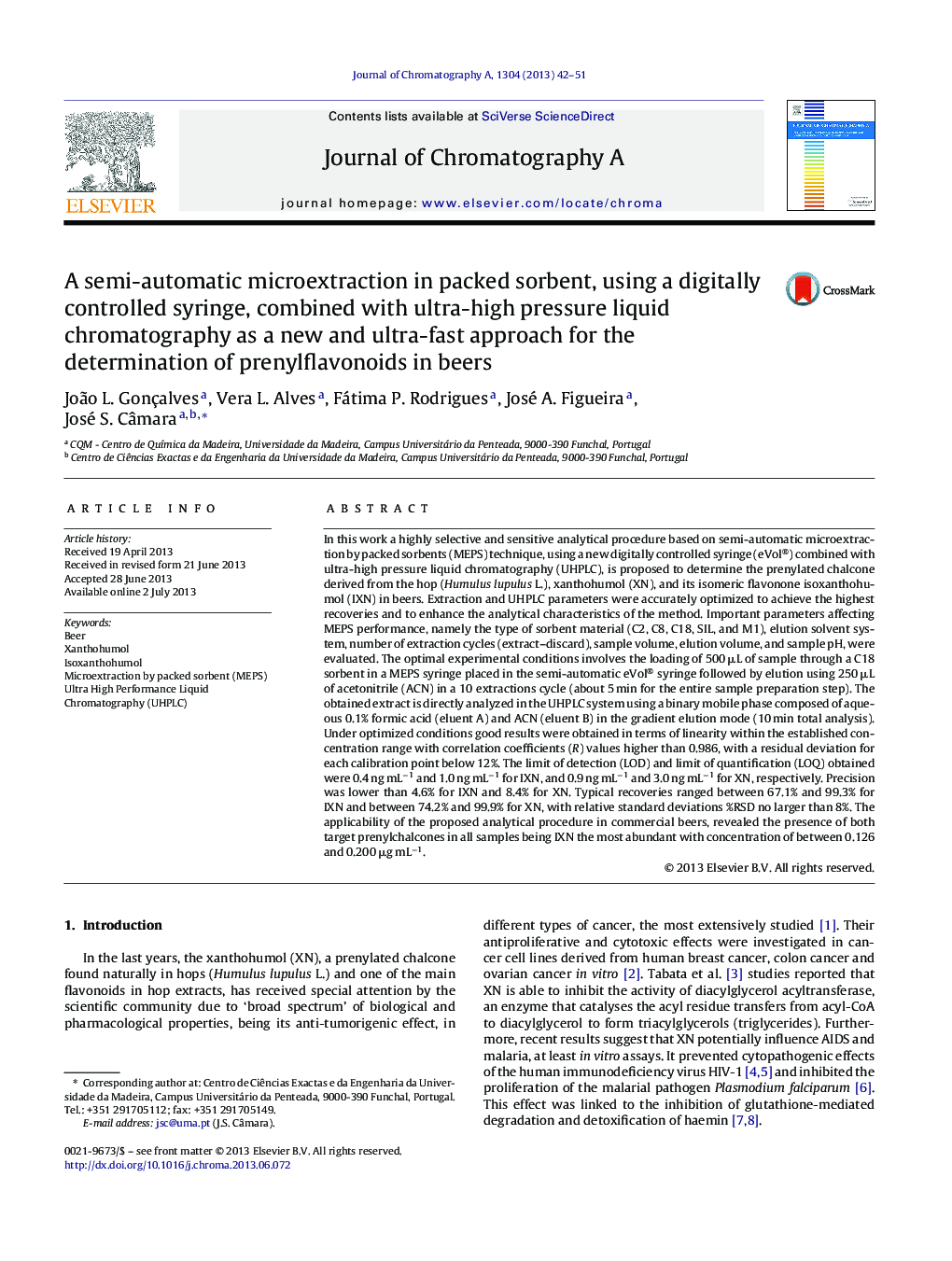| Article ID | Journal | Published Year | Pages | File Type |
|---|---|---|---|---|
| 1200563 | Journal of Chromatography A | 2013 | 10 Pages |
•MEPS reported for the first time to XN and IXN analysis on commercial beers.•Attractive, promising and reliable alternative to commonly used methods.•Analysis was performed within short times and high resolution.•Excellent results in the determination of the prenylflavonoids were obtained.
In this work a highly selective and sensitive analytical procedure based on semi-automatic microextraction by packed sorbents (MEPS) technique, using a new digitally controlled syringe (eVol®) combined with ultra-high pressure liquid chromatography (UHPLC), is proposed to determine the prenylated chalcone derived from the hop (Humulus lupulus L.), xanthohumol (XN), and its isomeric flavonone isoxanthohumol (IXN) in beers. Extraction and UHPLC parameters were accurately optimized to achieve the highest recoveries and to enhance the analytical characteristics of the method. Important parameters affecting MEPS performance, namely the type of sorbent material (C2, C8, C18, SIL, and M1), elution solvent system, number of extraction cycles (extract–discard), sample volume, elution volume, and sample pH, were evaluated. The optimal experimental conditions involves the loading of 500 μL of sample through a C18 sorbent in a MEPS syringe placed in the semi-automatic eVol® syringe followed by elution using 250 μL of acetonitrile (ACN) in a 10 extractions cycle (about 5 min for the entire sample preparation step). The obtained extract is directly analyzed in the UHPLC system using a binary mobile phase composed of aqueous 0.1% formic acid (eluent A) and ACN (eluent B) in the gradient elution mode (10 min total analysis). Under optimized conditions good results were obtained in terms of linearity within the established concentration range with correlation coefficients (R) values higher than 0.986, with a residual deviation for each calibration point below 12%. The limit of detection (LOD) and limit of quantification (LOQ) obtained were 0.4 ng mL−1 and 1.0 ng mL−1 for IXN, and 0.9 ng mL−1 and 3.0 ng mL−1 for XN, respectively. Precision was lower than 4.6% for IXN and 8.4% for XN. Typical recoveries ranged between 67.1% and 99.3% for IXN and between 74.2% and 99.9% for XN, with relative standard deviations %RSD no larger than 8%. The applicability of the proposed analytical procedure in commercial beers, revealed the presence of both target prenylchalcones in all samples being IXN the most abundant with concentration of between 0.126 and 0.200 μg mL−1.
